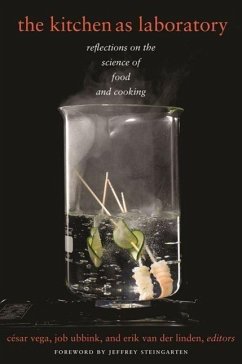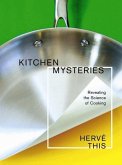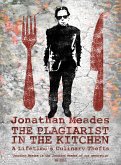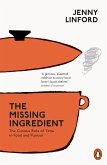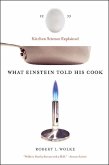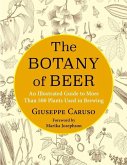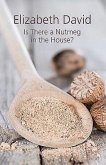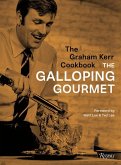The Kitchen as Laboratory
Reflections on the Science of Food and Cooking
Herausgeber: Vega, César; Linden, Erik van der; Ubbink, Job
The Kitchen as Laboratory
Reflections on the Science of Food and Cooking
Herausgeber: Vega, César; Linden, Erik van der; Ubbink, Job
- Broschiertes Buch
- Merkliste
- Auf die Merkliste
- Bewerten Bewerten
- Teilen
- Produkt teilen
- Produkterinnerung
- Produkterinnerung
From the seemingly mundane to the food fantastic - from grilled cheese sandwiches, pizzas, and soft-boiled eggs to Turkish ice cream, sugar glasses, and jellified beads - the essays in The Kitchen as Laboratory cover a range of creations and their history and culture. They consider the significance of an eater's background and dining atmosphere and the importance of a chef's methods, as well as the strategies used to create a great diversity of foods and dishes. This collection will delight experts and amateurs alike, especially as restaurants rely more on science-based cooking and…mehr
Andere Kunden interessierten sich auch für
![Kitchen Mysteries Kitchen Mysteries]() Herve ThisKitchen Mysteries13,99 €
Herve ThisKitchen Mysteries13,99 €![The Plagiarist in the Kitchen The Plagiarist in the Kitchen]() Jonathan MeadesThe Plagiarist in the Kitchen17,99 €
Jonathan MeadesThe Plagiarist in the Kitchen17,99 €![The Missing Ingredient The Missing Ingredient]() Jenny LinfordThe Missing Ingredient18,99 €
Jenny LinfordThe Missing Ingredient18,99 €![What Einstein Told His Cook What Einstein Told His Cook]() Robert L. WolkeWhat Einstein Told His Cook14,99 €
Robert L. WolkeWhat Einstein Told His Cook14,99 €![The Botany of Beer The Botany of Beer]() Giuseppe CarusoThe Botany of Beer41,99 €
Giuseppe CarusoThe Botany of Beer41,99 €![Is There a Nutmeg in the House? Is There a Nutmeg in the House?]() Elizabeth DavidIs There a Nutmeg in the House?22,99 €
Elizabeth DavidIs There a Nutmeg in the House?22,99 €![The Graham Kerr Cookbook: By the Galloping Gourmet The Graham Kerr Cookbook: By the Galloping Gourmet]() Graham KerrThe Graham Kerr Cookbook: By the Galloping Gourmet14,99 €
Graham KerrThe Graham Kerr Cookbook: By the Galloping Gourmet14,99 €-
-
-
From the seemingly mundane to the food fantastic - from grilled cheese sandwiches, pizzas, and soft-boiled eggs to Turkish ice cream, sugar glasses, and jellified beads - the essays in The Kitchen as Laboratory cover a range of creations and their history and culture. They consider the significance of an eater's background and dining atmosphere and the importance of a chef's methods, as well as the strategies used to create a great diversity of foods and dishes. This collection will delight experts and amateurs alike, especially as restaurants rely more on science-based cooking and recreational cooks increasingly explore the physics and chemistry behind their art. Contributors end each essay with their personal thoughts on food, cooking, and science, offering rare insight into a professional's passion for playing with food.
Hinweis: Dieser Artikel kann nur an eine deutsche Lieferadresse ausgeliefert werden.
Hinweis: Dieser Artikel kann nur an eine deutsche Lieferadresse ausgeliefert werden.
Produktdetails
- Produktdetails
- Arts and Traditions of the Table: Perspectives on Culinary History
- Verlag: Columbia University Press
- Seitenzahl: 336
- Erscheinungstermin: 13. August 2013
- Englisch
- Abmessung: 233mm x 154mm x 22mm
- Gewicht: 542g
- ISBN-13: 9780231153454
- ISBN-10: 0231153457
- Artikelnr.: 36838954
- Herstellerkennzeichnung
- Libri GmbH
- Europaallee 1
- 36244 Bad Hersfeld
- gpsr@libri.de
- Arts and Traditions of the Table: Perspectives on Culinary History
- Verlag: Columbia University Press
- Seitenzahl: 336
- Erscheinungstermin: 13. August 2013
- Englisch
- Abmessung: 233mm x 154mm x 22mm
- Gewicht: 542g
- ISBN-13: 9780231153454
- ISBN-10: 0231153457
- Artikelnr.: 36838954
- Herstellerkennzeichnung
- Libri GmbH
- Europaallee 1
- 36244 Bad Hersfeld
- gpsr@libri.de
Edited by Cesar Vega, Job Ubbink, and Erik van der Linden
Acknowledgments
Introduction: The Case for Science Inspired by the Kitchen, by César Vega,
Job Ubbink, and Erik van der Linden
1. The Science of a Grilled Cheese Sandwich, by Jennifer Kimmel
2. Sound Appeal, by Malcolm Povey
3. Mediterranean Sponge Cake, by Cristina de Lorenzo and Sergio Laguarda
4. Spherification: Faux Caviar and Skinless Ravioli, by César Vega and Pere
Castells
5. Konjac Dondurma: Designing a Sustainable and Stretchable "Fox Testicle"
Ice Cream, by Arielle Johnson, Kent Kirshenbaum, and Anne E. McBride
6. Stretchy Textures in the Kitchen: Insights from Salep Dondurma, by Tim
J. Foster
7. Moussaka as an Introduction to Food Chemistry, by Christos Ritzoulis
8. The Sticky Science of Malaysian Dodol, by Alias A. Karim and Rajeev Bhat
9. The Perfect Cookie Dough, by Aki Kamozawa and H. Alexander Talbot
10. To Bloom or Not to Bloom, by Amelia Frazier and Richard Hartel
11. Bacon: The Slice of Life, by Timothy Knight
12. Scandinavian "Sushi": The Raw Story, by Pia Snitkjær and Louise M.
Mortensen
13. Maximizing Food Flavor by Speeding Up the Maillard Reaction, by Martin
Lersch
14. Lighten Up! The Role of Gases in the Culinary Experience, by Matt
Golding
15. The Meringue Concept and Its Variations, by Peter Wierenga, Helen
Hofstede, Erik van der Linden, Sidney Schutte, and Jonnie Boer
16. Why Does Cold Milk Foam Better? Into the Nature of Milk Foam, by Julia
Maldonado-Valderrama, Peter J. Wilde, and María J. Gálvez-Ruiz
17. Ice Cream Unlimited: The Possibilities of Ingredient Pairing, by Elke
Scholten and Miriam Peters
18. Egg Yolk: A Library of Textures, by César Vega
19. Ketchup as Tasty Soft Matter: The Case of Xanthan Gum, by Thomas Vilgis
20. Taste and Mouthfeel of Soups and Sauces, by John R. Mitchell
21. Playing with Sound: Crispy Crusts, by Paula Varela and Susana Fiszman
22. Baked Alaska and Frozen Florida: On the Physics of Heat Transfer, by
Adam Burbidge
23. On Superb Crackling Duck Skin: An Homage to Nicholas Kurti, by
Christopher Young and Nathan Myhrvold
24. Sweet Physics: Sugar, Sugar Blends, and Sugar Glasses, by Natalie Russ
and Thomas Vilgis
25. Coffee, Please, but No Bitters, by Jan Groenewold and Eke Mariën
26. Turning Waste into Wealth: On Bones, Stocks, and Sauce Reductions, by
Job Ubbink
27. Restructuring Pig Trotters: Fine Chemistry Supporting the Creative
Culinary Process, by Jorge Ruiz and Julia Calvarro
28. Innovate: Old World Pizza Crust with New World Ingredients, by Thomas
M. Tongue Jr.
29. Eating Is Believing, by Line Holler Mielby and Michael Bom Frøst
30. Molecular Gastronomy Is a Scientific Activity, by Hervé This
31. The Pleasure of Eating: The Integration of Multiple Senses, by
Juan-Carlos Arboleya, Daniel Lasa, Oswaldo Oliva, Javier Vergara, and
Andoni Luis-Aduriz
32. On the Fallacy of Cooking from Scratch, by César Vega and David J.
McClements
33. Science and Cooking: Looking Beyond the Trends a Personal, Practical
Approach, by Michael Laiskonis
Contributors
Index
Introduction: The Case for Science Inspired by the Kitchen, by César Vega,
Job Ubbink, and Erik van der Linden
1. The Science of a Grilled Cheese Sandwich, by Jennifer Kimmel
2. Sound Appeal, by Malcolm Povey
3. Mediterranean Sponge Cake, by Cristina de Lorenzo and Sergio Laguarda
4. Spherification: Faux Caviar and Skinless Ravioli, by César Vega and Pere
Castells
5. Konjac Dondurma: Designing a Sustainable and Stretchable "Fox Testicle"
Ice Cream, by Arielle Johnson, Kent Kirshenbaum, and Anne E. McBride
6. Stretchy Textures in the Kitchen: Insights from Salep Dondurma, by Tim
J. Foster
7. Moussaka as an Introduction to Food Chemistry, by Christos Ritzoulis
8. The Sticky Science of Malaysian Dodol, by Alias A. Karim and Rajeev Bhat
9. The Perfect Cookie Dough, by Aki Kamozawa and H. Alexander Talbot
10. To Bloom or Not to Bloom, by Amelia Frazier and Richard Hartel
11. Bacon: The Slice of Life, by Timothy Knight
12. Scandinavian "Sushi": The Raw Story, by Pia Snitkjær and Louise M.
Mortensen
13. Maximizing Food Flavor by Speeding Up the Maillard Reaction, by Martin
Lersch
14. Lighten Up! The Role of Gases in the Culinary Experience, by Matt
Golding
15. The Meringue Concept and Its Variations, by Peter Wierenga, Helen
Hofstede, Erik van der Linden, Sidney Schutte, and Jonnie Boer
16. Why Does Cold Milk Foam Better? Into the Nature of Milk Foam, by Julia
Maldonado-Valderrama, Peter J. Wilde, and María J. Gálvez-Ruiz
17. Ice Cream Unlimited: The Possibilities of Ingredient Pairing, by Elke
Scholten and Miriam Peters
18. Egg Yolk: A Library of Textures, by César Vega
19. Ketchup as Tasty Soft Matter: The Case of Xanthan Gum, by Thomas Vilgis
20. Taste and Mouthfeel of Soups and Sauces, by John R. Mitchell
21. Playing with Sound: Crispy Crusts, by Paula Varela and Susana Fiszman
22. Baked Alaska and Frozen Florida: On the Physics of Heat Transfer, by
Adam Burbidge
23. On Superb Crackling Duck Skin: An Homage to Nicholas Kurti, by
Christopher Young and Nathan Myhrvold
24. Sweet Physics: Sugar, Sugar Blends, and Sugar Glasses, by Natalie Russ
and Thomas Vilgis
25. Coffee, Please, but No Bitters, by Jan Groenewold and Eke Mariën
26. Turning Waste into Wealth: On Bones, Stocks, and Sauce Reductions, by
Job Ubbink
27. Restructuring Pig Trotters: Fine Chemistry Supporting the Creative
Culinary Process, by Jorge Ruiz and Julia Calvarro
28. Innovate: Old World Pizza Crust with New World Ingredients, by Thomas
M. Tongue Jr.
29. Eating Is Believing, by Line Holler Mielby and Michael Bom Frøst
30. Molecular Gastronomy Is a Scientific Activity, by Hervé This
31. The Pleasure of Eating: The Integration of Multiple Senses, by
Juan-Carlos Arboleya, Daniel Lasa, Oswaldo Oliva, Javier Vergara, and
Andoni Luis-Aduriz
32. On the Fallacy of Cooking from Scratch, by César Vega and David J.
McClements
33. Science and Cooking: Looking Beyond the Trends a Personal, Practical
Approach, by Michael Laiskonis
Contributors
Index
Acknowledgments
Introduction: The Case for Science Inspired by the Kitchen, by César Vega,
Job Ubbink, and Erik van der Linden
1. The Science of a Grilled Cheese Sandwich, by Jennifer Kimmel
2. Sound Appeal, by Malcolm Povey
3. Mediterranean Sponge Cake, by Cristina de Lorenzo and Sergio Laguarda
4. Spherification: Faux Caviar and Skinless Ravioli, by César Vega and Pere
Castells
5. Konjac Dondurma: Designing a Sustainable and Stretchable "Fox Testicle"
Ice Cream, by Arielle Johnson, Kent Kirshenbaum, and Anne E. McBride
6. Stretchy Textures in the Kitchen: Insights from Salep Dondurma, by Tim
J. Foster
7. Moussaka as an Introduction to Food Chemistry, by Christos Ritzoulis
8. The Sticky Science of Malaysian Dodol, by Alias A. Karim and Rajeev Bhat
9. The Perfect Cookie Dough, by Aki Kamozawa and H. Alexander Talbot
10. To Bloom or Not to Bloom, by Amelia Frazier and Richard Hartel
11. Bacon: The Slice of Life, by Timothy Knight
12. Scandinavian "Sushi": The Raw Story, by Pia Snitkjær and Louise M.
Mortensen
13. Maximizing Food Flavor by Speeding Up the Maillard Reaction, by Martin
Lersch
14. Lighten Up! The Role of Gases in the Culinary Experience, by Matt
Golding
15. The Meringue Concept and Its Variations, by Peter Wierenga, Helen
Hofstede, Erik van der Linden, Sidney Schutte, and Jonnie Boer
16. Why Does Cold Milk Foam Better? Into the Nature of Milk Foam, by Julia
Maldonado-Valderrama, Peter J. Wilde, and María J. Gálvez-Ruiz
17. Ice Cream Unlimited: The Possibilities of Ingredient Pairing, by Elke
Scholten and Miriam Peters
18. Egg Yolk: A Library of Textures, by César Vega
19. Ketchup as Tasty Soft Matter: The Case of Xanthan Gum, by Thomas Vilgis
20. Taste and Mouthfeel of Soups and Sauces, by John R. Mitchell
21. Playing with Sound: Crispy Crusts, by Paula Varela and Susana Fiszman
22. Baked Alaska and Frozen Florida: On the Physics of Heat Transfer, by
Adam Burbidge
23. On Superb Crackling Duck Skin: An Homage to Nicholas Kurti, by
Christopher Young and Nathan Myhrvold
24. Sweet Physics: Sugar, Sugar Blends, and Sugar Glasses, by Natalie Russ
and Thomas Vilgis
25. Coffee, Please, but No Bitters, by Jan Groenewold and Eke Mariën
26. Turning Waste into Wealth: On Bones, Stocks, and Sauce Reductions, by
Job Ubbink
27. Restructuring Pig Trotters: Fine Chemistry Supporting the Creative
Culinary Process, by Jorge Ruiz and Julia Calvarro
28. Innovate: Old World Pizza Crust with New World Ingredients, by Thomas
M. Tongue Jr.
29. Eating Is Believing, by Line Holler Mielby and Michael Bom Frøst
30. Molecular Gastronomy Is a Scientific Activity, by Hervé This
31. The Pleasure of Eating: The Integration of Multiple Senses, by
Juan-Carlos Arboleya, Daniel Lasa, Oswaldo Oliva, Javier Vergara, and
Andoni Luis-Aduriz
32. On the Fallacy of Cooking from Scratch, by César Vega and David J.
McClements
33. Science and Cooking: Looking Beyond the Trends a Personal, Practical
Approach, by Michael Laiskonis
Contributors
Index
Introduction: The Case for Science Inspired by the Kitchen, by César Vega,
Job Ubbink, and Erik van der Linden
1. The Science of a Grilled Cheese Sandwich, by Jennifer Kimmel
2. Sound Appeal, by Malcolm Povey
3. Mediterranean Sponge Cake, by Cristina de Lorenzo and Sergio Laguarda
4. Spherification: Faux Caviar and Skinless Ravioli, by César Vega and Pere
Castells
5. Konjac Dondurma: Designing a Sustainable and Stretchable "Fox Testicle"
Ice Cream, by Arielle Johnson, Kent Kirshenbaum, and Anne E. McBride
6. Stretchy Textures in the Kitchen: Insights from Salep Dondurma, by Tim
J. Foster
7. Moussaka as an Introduction to Food Chemistry, by Christos Ritzoulis
8. The Sticky Science of Malaysian Dodol, by Alias A. Karim and Rajeev Bhat
9. The Perfect Cookie Dough, by Aki Kamozawa and H. Alexander Talbot
10. To Bloom or Not to Bloom, by Amelia Frazier and Richard Hartel
11. Bacon: The Slice of Life, by Timothy Knight
12. Scandinavian "Sushi": The Raw Story, by Pia Snitkjær and Louise M.
Mortensen
13. Maximizing Food Flavor by Speeding Up the Maillard Reaction, by Martin
Lersch
14. Lighten Up! The Role of Gases in the Culinary Experience, by Matt
Golding
15. The Meringue Concept and Its Variations, by Peter Wierenga, Helen
Hofstede, Erik van der Linden, Sidney Schutte, and Jonnie Boer
16. Why Does Cold Milk Foam Better? Into the Nature of Milk Foam, by Julia
Maldonado-Valderrama, Peter J. Wilde, and María J. Gálvez-Ruiz
17. Ice Cream Unlimited: The Possibilities of Ingredient Pairing, by Elke
Scholten and Miriam Peters
18. Egg Yolk: A Library of Textures, by César Vega
19. Ketchup as Tasty Soft Matter: The Case of Xanthan Gum, by Thomas Vilgis
20. Taste and Mouthfeel of Soups and Sauces, by John R. Mitchell
21. Playing with Sound: Crispy Crusts, by Paula Varela and Susana Fiszman
22. Baked Alaska and Frozen Florida: On the Physics of Heat Transfer, by
Adam Burbidge
23. On Superb Crackling Duck Skin: An Homage to Nicholas Kurti, by
Christopher Young and Nathan Myhrvold
24. Sweet Physics: Sugar, Sugar Blends, and Sugar Glasses, by Natalie Russ
and Thomas Vilgis
25. Coffee, Please, but No Bitters, by Jan Groenewold and Eke Mariën
26. Turning Waste into Wealth: On Bones, Stocks, and Sauce Reductions, by
Job Ubbink
27. Restructuring Pig Trotters: Fine Chemistry Supporting the Creative
Culinary Process, by Jorge Ruiz and Julia Calvarro
28. Innovate: Old World Pizza Crust with New World Ingredients, by Thomas
M. Tongue Jr.
29. Eating Is Believing, by Line Holler Mielby and Michael Bom Frøst
30. Molecular Gastronomy Is a Scientific Activity, by Hervé This
31. The Pleasure of Eating: The Integration of Multiple Senses, by
Juan-Carlos Arboleya, Daniel Lasa, Oswaldo Oliva, Javier Vergara, and
Andoni Luis-Aduriz
32. On the Fallacy of Cooking from Scratch, by César Vega and David J.
McClements
33. Science and Cooking: Looking Beyond the Trends a Personal, Practical
Approach, by Michael Laiskonis
Contributors
Index

